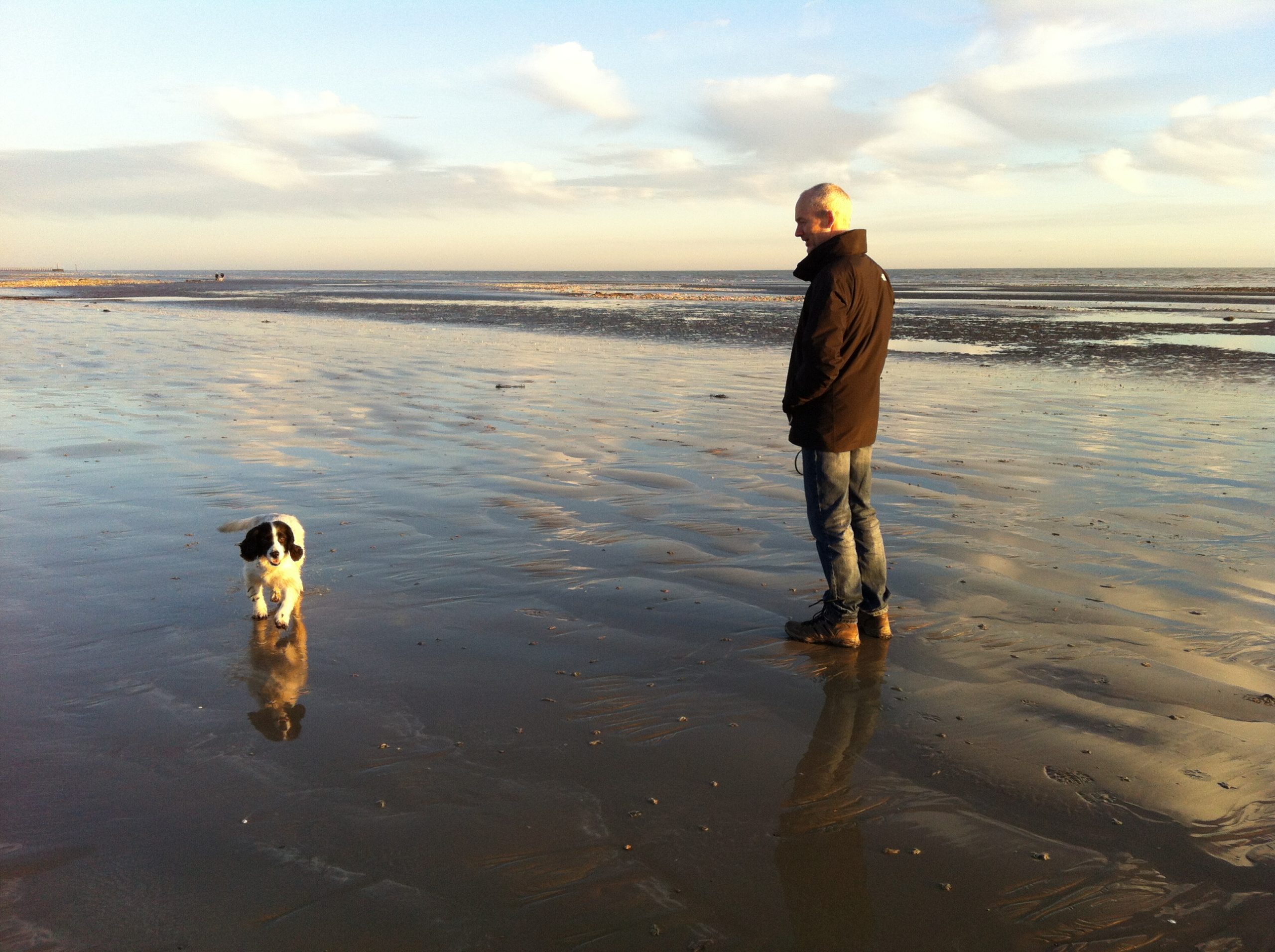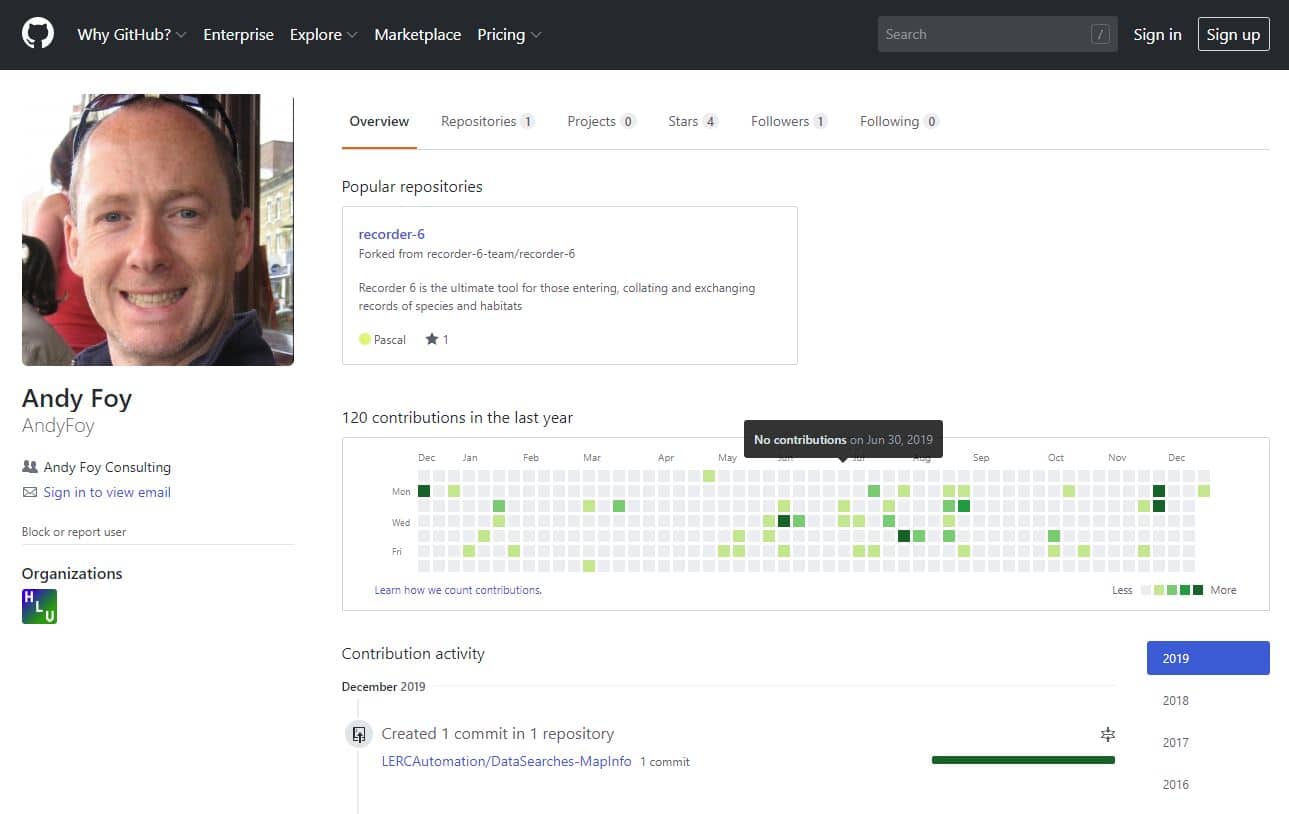Andy Foy, GiGL Systems Manager
Andy is GiGL’s Systems Manager. He manages the development and maintenance of GiGL data systems and tools. Andy works with the team to streamline data processes and ensure that GiGL datasets are fit for purpose for use by partners, community groups and the public.

Town or countryside?
Countryside.
Summer or winter?
Winter.
Early bird or night owl?
Naturally an owl but constantly working towards being an early bird.
Outdoor or indoors?
Outdoors.
Plants or animals?
Animals.
What species is closest to your heart and why?
There are so many species as I am a real generalist, but the Barn Owl (Tyto alba) is definitely up there. They are such beautiful and elusive birds so I’m lucky where I live to get the occasional glimpse, which is a real treat.
What is your favourite Greater London open space and why?
I worked at Morden Hall Park as a volunteer warden many years ago and was struck by the incredible variety of habitats and species packed into such a small site. The park is a former deer park located on the banks of the River Wandle in Morden, south London. It is surrounded by roads, housing estates and rail lines, yet contained within its 50 hectares (125 acres) are a variety of natural landscapes including historic parkland, formal gardens, avenues of mature trees, meadows and wetlands. It supports an abundance of wildlife including kingfishers, herons and dragonflies, and is a great place for families and young explorers to play and learn about their natural environment.

Morden Hall Park © stu smith
What has been your most formative experience working with the natural environment? And what did you learn then that you keep with you today?
My dissertation at university was the development of a habitat suitability model for chalk grassland within East Hampshire. Not only did that require researching all about the geological, topological and environmental requirements of chalk grasslands, but I needed to understand how habitat suitability models worked and then learn how to develop and test a new model using a Geographical Information System (GIS) application. This was a huge learning curve for me that taught me a lot about the requirements of habitats and species at the landscape scale. More importantly it showed me there were real-life opportunities for me to combine my experience in IT with an understanding of the natural environment. Since then I have always tried to maintain a balance in my work as both an Ecologist and an IT practitioner.
How long have you worked for GiGL and how has your role changed in that time?
I first worked for GiGL in 2004 after I had returned to university to study Wildlife Conservation. In 2012 I became a freelance Ecologist and IT Consultant and worked with GiGL on a number of projects to develop databases and IT solutions to help manage and improve their extensive data holdings. I finally joined GiGL as an employee in September 2019 as Systems Manager, so I now focus on supporting and enhancing GiGL’s systems and datasets to further improve their quality, usability and accessibility.
What is your most enjoyable GiGL task and why?
I love problem solving and get a real kick out of developing a solution and then being able to share it in the hope that it will help others solve the same problem and not have to reinvent the wheel. The Local Environmental Records Centre (LERC) community is very small and is hugely underfunded. Many LERCs do not have the breadth and depth of skills and resources that GiGL has established, so it’s great to share systems and expertise whenever we can.

GitHub is one way to share our skills and resources (https://github.com/AndyFoy)
What are the greatest differences in the challenges now facing London’s biodiversity, compared with when you joined GiGL? How can GiGL help?
When I first worked at GiGL in 2004 climate change was not widely understood or discussed. Nowadays we have a much clearer picture of the challenges we face to slow and reverse the loss of biodiversity, in London and globally, caused by the effects of climate change and the ever increasing pressures from habitat loss and degradation.
London has a lot to offer someone looking to learn more about wildlife and open spaces. What one thing would you advise people to explore?
I would recommend exploring the open spaces and Sites of Important for Nature Conservation (SINCs) in their local area. Not only can you learn all about the habitats and species that they support, but you can also build a picture of how those spaces are vital components that act as wildlife corridors and stepping stones within the wider London network.
